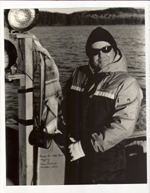Beginning in 1936, Prof. Fred Fry of the University of Toronto initiated a survey of anglers fishing on Lake Opeongo and surrounding lakes of Algonquin Provincial Park. Better access to the park was underway with improvements to roads to accommodate visitors arriving in what was then a relatively new mass-produced technology - the family car. There was concern about whether or not fisheries in Algonquin could sustain a higher level of fishing effort. The Lake Opeongo creel census has continued each year since 1936 and is now in its 84th year of operation. It represents one of the longest term studies of animal population ecology.

A creel survey is a survey of anglers and their catch. Surveys can vary depending on whether or not interviewers are collecting information on completed fishing trips or while the anglers are still fishing (an incomplete trip). At Lake Opeongo, the creel survey is largely based on completed fishing trips and consists of interviewing anglers for information on their fishing hours, location and other relevant data such as gear type. The catch of fish is sampled for size, calcified tissues are removed for aging fish and other biological information such as diet and health of the fish are recorded. By the way, "creel" is a Scottish word for the wicker basket that anglers in the past used to hold their catch of fish.
The Opeongo creel survey just completed its 83rd year (1936-2018) and represents one of the longest running long-term studies of animal population ecology in the world. The creel runs each year from the start of the trout fishing season on the last Saturday of April to the close on September 30. The catch consists largely of lake trout and smallmouth bass with the occasional brook trout and burbot.
